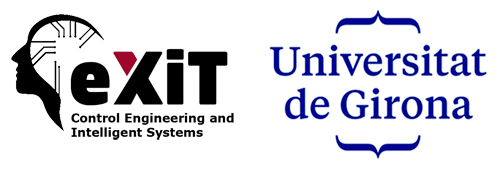
Reference:
Execution:
Main Researchers:
Center:
Contact:
Telephone:
TED2021-131365B-C42
01/12/2022-31/07/2025
Joaquim Meléndez and Joan Colomer
+(34) 650507142
The project, Modelling and scheduling of communities for Grid Interaction (OptiREC /EM-GI),deals with the challenge of facilitating the aggregated participation of prosumers in flexibility markets. The proposal pursuits two complementary objectives. First, to manage flexibility capacity of energy communities in order to maximise self-production and sustainability goals (at community level); and, second, to activate flexibility in order to avoid possible critical events in the grid (congestions and/or over/under voltages) due to sudden variations of demand or generation. The proposal addresses these problems under the hypothesis that it is possible to reduce uncertainty by combining deterministic models of significant energy assets together with the aggregated study of energy profiles in the community. The first will be useful to provide a baseline defined by the certain operation of specific assets, whereas the use of data driven methods (machine learning approach) on aggregated data will improve the accuracy of models. Then, the combination of robust scheduling (day ahead) and re-scheduling methods (intra-day) will be used to optimally respond to continuous -15 min basis- demand of flexibility to fulfil multi-objective goals combining community objectives (e.g. maximisation of self-consumption or conservative use of storage) together with their participation in specific flexibility programs (e.g. peak shaving, valley filling or loss reduction) without altering the community behaviour. Novelty of the proposal resides on four main points: a) modelling the forecasting problem from the perspective of flexibility instead of energy demand; b) combination of first principles deterministic models and data-driven methods for flexibility forecasting, c) optimisation methods for robust scheduling and rescheduling; and, d) implementation of the proposed methods as a set of web services ready for integration with existing energy management solutions.
Methodological Advances in Temperature Dynamics Modeling for Energy-Efficient Indoor Air Management Systems.
Iglesias, F., Massana, J., Burgas, L., Planellas, N., & Colomer, J. (2025). Methodological Advances in Temperature Dynamics Modeling for Energy-Efficient Indoor Air Management Systems. Applied Sciences, 15(8), 4291. | DOI: 10.3390/app15084291
Enabling charging point operators for participation in congestion markets
Massana, J., Burgas, L., Cañigueral, M., Sumper, A., Melendez, J., & Colomer, J. (2025). Enabling charging point operators for participation in congestion markets. International Journal of Electrical Power & Energy Systems, 167, 110604. https://doi.org/10.1016/j.ijepes.2025.110604
Increasing hosting capacity of low-voltage distribution network using smart charging based on local and dynamic capacity limits.
Cañigueral, M., Wolbertus, R., & Meléndez, J. (2025). Increasing hosting capacity of low-voltage distribution network using smart charging based on local and dynamic capacity limits. Sustainable Energy Grids and Networks, 101626. https://doi.org/10.1016/j.segan.2025.101626
Day-ahead scheduling of controllable switches and energy storage for optimal power flow considering forecast errors
Massana, J., Burgas, L., Colomer, J., Melendez, J., & Ferrer, A. (2024). Day-ahead scheduling of controllable switches and energy storage for optimal power flow considering forecast errors. AIP Conference Proceedings, 3187, 030003. https://doi.org/10.1063/5.0223326
Optimal scheduler for energy consumption reduction in multi-vector energy management systems: A case study at the Port of Borg.
Massana, J., Burgas, L., Colomer, J., Sumper, A., & Herraiz, S. (2024). Optimal scheduler for energy consumption reduction in multi-vector energy management systems: A case study at the Port of Borg. Heliyon, 10(10), e31419–e31419. https://doi.org/10.1016/j.heliyon.2024.e31419




